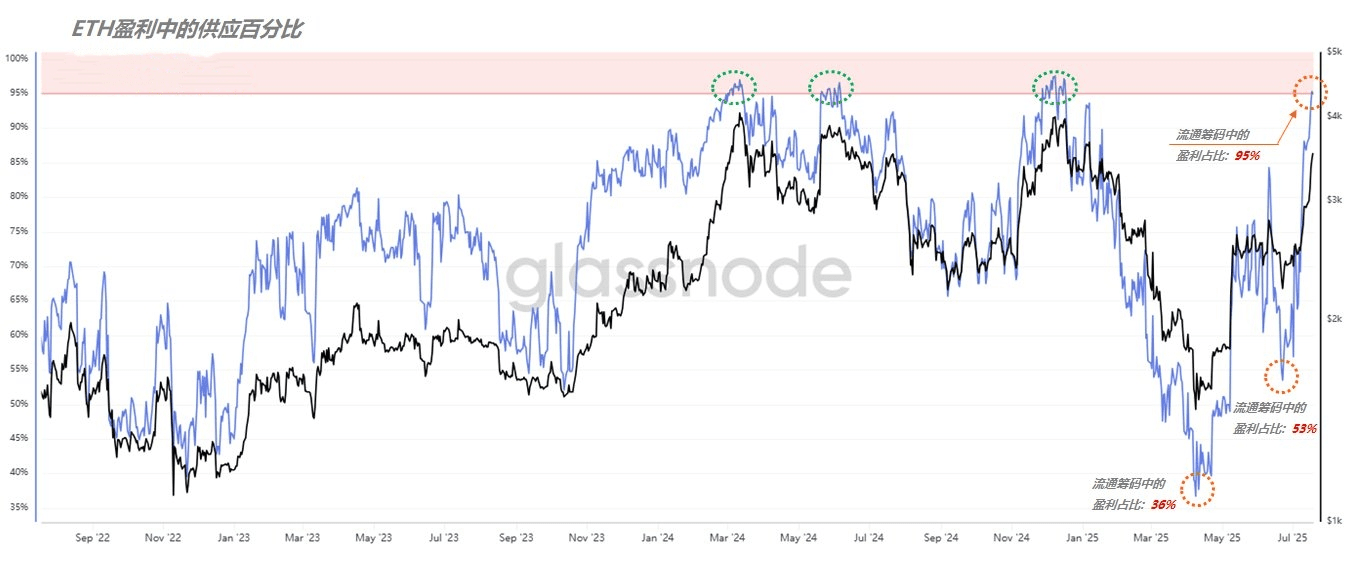"Can Ethereum be bought now?" - Similar questions have been frequently raised recently, reflecting the confusion of market players to some extent. Rather than getting caught up in the highs and lows of prices, it is better to focus on a key indicator: the percentage of supply in profit, which can more objectively reflect market risks and opportunities.
As of July 18, the percentage of supply in profit for Ethereum is 95%. This means that 95% of the currently circulating Ethereum is in a state of profit, having entered a short-term risk zone (the red shaded area of the data chart). Based on past performance, after this indicator entered this zone in March, May, and December 2024, Ethereum experienced phase corrections.

(Figure 1)
It must be stated that this does not determine that Ethereum's current round of increase has peaked (current high price $3673), but rather that the short-term market profit effect has reached its peak, and it is likely to need time to adjust.
Looking back to June 22 of this year, when Ethereum adjusted to $2230, the profit percentage was 53%. At that time, we pointed out that for players with a strong risk tolerance, this was a noteworthy node - although a 53% profit ratio is not low, nearly half of the chips were in a loss state, making the risk significantly lower than the current one.
The core logic is: we focus on data rather than just price. Even if the future price is higher than the current one, as long as the profit percentage is lower, it represents a better entry point. For example, if Ethereum rises to $10,000 and then adjusts to $7,000 after high-level turnover, and the profit percentage drops below 50%, its risk will be much lower than the current situation of "$3673 + 95% profit."
Short-term risk points do not mean the end of the trend; specific decisions regarding entry points and position allocation still need to be judged by players based on their own situations. The data only provides an objective reference dimension.